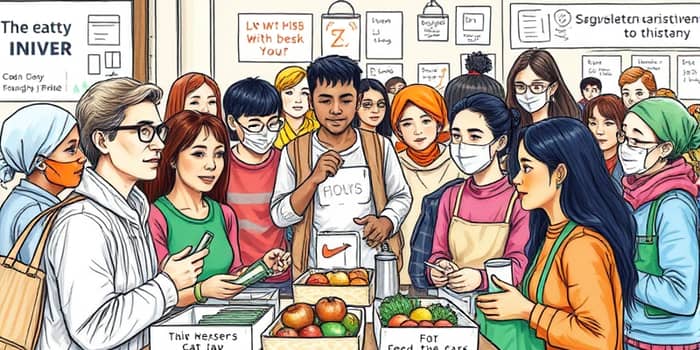
Across the globe, households are grappling with the relentless pressure of rising prices for food, housing, and healthcare. Governments and organizations are responding with unprecedented expansions of social safety nets designed to cushion vulnerable populations from economic distress.
This article explores the foundation, scale, effectiveness, and evolving challenges of these programs, highlighting how high inflation has reshaped policy priorities and delivery mechanisms.
Social safety nets encompass a range of government and community programs aimed to protect families from economic shocks such as inflation, natural disasters, and public health crises. They form the bedrock of modern welfare strategies by offering direct assistance to those most in need.
As of 2024, more than 2.5 billion people are covered by at least one social safety net program worldwide. Yet, approximately 2 billion individuals remain inadequately protected, particularly in low- and middle-income countries where informal work and limited fiscal capacity constrain program reach.
In response to COVID-19 and subsequent spikes in global food prices, safety net transfers have surged to their largest scale ever. Even so, financing shortfalls and administrative bottlenecks continue to hinder universal coverage.
Evidence shows that well-designed safety nets can significantly reduce poverty and inequality. Programs enabled 36% of the poorest households to escape extreme poverty, and they reduce the poverty gap by about 45% on average.
In advanced economies like the United States, safety net spending accounted for 4.8% of GDP in 2023. For over 72 million Americans, Social Security and SSI provide a critical income floor, especially with benefits set to increase by 2.5% in 2025.
Persistent high inflation has placed low- and moderate-income families under severe strain. Seventy-six percent of service providers report a decline in financial well-being among these groups, driven by escalating costs for rent, food, and utilities.
Demand for assistance—ranging from food bank visits to rent subsidies—has skyrocketed, even as nonprofits struggle with erosion in funding and volunteer support, leading to service backlogs and reduced outreach.
To maintain real benefit values and responsiveness, many countries are adopting cost-of-living adjustments (COLA) and digital payment solutions. In the United States, the taxable maximum for Social Security rose to $176,100 in 2025, with earnings thresholds recalibrated to align with wage inflation.
Despite recent expansions, many programs struggle with fiscal constraints and benefit erosion. The World Bank recommends strategic priorities to build more resilient systems:
Addressing these challenges will require close collaboration between international agencies, national governments, and civil society to secure adequate resources and streamline implementation.
In Australia, fiscal stimulus equivalent to 15.75% of GDP was channeled through wage subsidies and targeted transfers during the pandemic. Meanwhile, many middle-income economies have leveraged mobile money platforms to extend digital cash payments to remote communities.
Nonprofit service providers raise alarms over capacity strains, while institutions such as the IMF stress the need for rapidly changing needs and prices to be reflected in program formulas to safeguard real benefit values.
As inflationary pressures persist, social safety nets stand at a critical juncture. Expanded coverage and dynamic policy adjustments have offered a lifeline to millions, yet significant gaps remain. Stakeholders must prioritize resilience and adaptability to ensure that no household is left unsupported in turbulent economic times.
With collaborative efforts and data-driven reforms, safety nets can evolve from temporary relief measures into enduring pillars of economic security and social equity.
References













